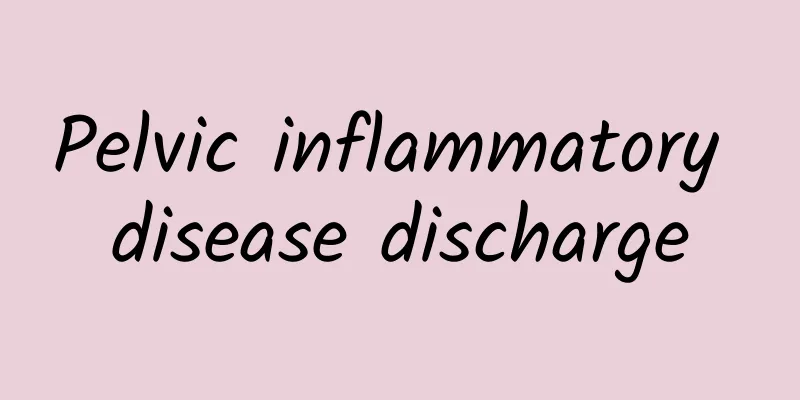The difference between pelvic inflammatory disease and adnexitis

|
The difference between pelvic inflammatory disease and adnexitis: Pelvic inflammatory disease and adnexitis are harmful to women. They are very different. Pelvic inflammatory disease refers to abnormalities, inflammation, persistent pain, and increased secretions in the connective tissue around the reproductive organs or uterus. The main manifestations of adnexitis are increased vaginal discharge, backache, menstrual disorders, etc. Because the symptoms are different, the examination and treatment are also different, mainly depending on the specific situation. 1. Different meanings Women don't know about adnexitis and pelvic inflammatory disease, mainly because they don't know the meaning of the disease. In fact, adnexitis mainly refers to certain inflammations in the female fallopian tubes or ovaries, and adnexitis is also a type of pelvic inflammatory disease. Pelvic inflammatory disease mainly refers to inflammation of the female pelvic reproductive organs or the connective tissue around the uterus, which leads to disease. 2. Symptoms are similar but also different The symptoms of adnexitis and pelvic inflammatory disease are similar to each other, but not completely. If you analyze them carefully, there are still some differences. After the onset of pelvic inflammatory disease, patients will experience persistent pain in the lower abdomen, a significant increase in vaginal discharge, and pain and fever after sexual intercourse. After the onset of the disease, adnexitis is mainly manifested by increased leucorrhea, back pain, and menstrual disorders. 3. Different inspection methods Due to different causes, specific examinations are also different. Generally speaking, when examining adnexitis, diagnosis can be made through B-ultrasound and the patient's surface symptoms. However, the examination of pelvic inflammatory disease can be performed through direct smear of secretions, pathogen culture or laparoscopy. 4. Different treatments The causes and symptoms of pelvic inflammatory disease and adnexitis are very different, so the specific treatment methods will also be different, one is drug treatment and the other is surgical treatment. Patients can receive treatment under the guidance of a doctor. |
<<: How to cure uterine fibroids
>>: Uterine fibroids usually shrink after menopause. How big a uterine fibroid should be removed?
Recommend
Long-term poor diet structure can induce the cause of ovarian cysts
Many women do not understand the cause of ovarian...
What are the hazards of congenital absence of vagina to women?
Congenital absence of vagina is a rare disease in...
Preparations before medical abortion
Medical abortion is now favored by many female fr...
Can pelvic inflammatory disease cause infertility? How to prevent and treat it in daily life
How to prevent pelvic inflammatory disease? Can p...
What are the methods for treating vaginitis? In fact, these methods are more effective
What are the methods for treating vaginitis ? In ...
How do menopausal patients use medication during treatment?
Menopause is a common disease among female friend...
How to distinguish brewed soy sauce from chemical soy sauce? Is chemical soy sauce harmful to the human body? Nutritionist's analysis
Soy sauce is a necessity in people's lives an...
What are the main causes of cervical erosion? Summarize the 4 causes of cervical erosion
Cervical erosion is a common gynecological diseas...
Does smoking cause ovarian cysts?
Does smoking cause ovarian cysts? Smoking is harm...
The main causes of recurrence of pelvic inflammatory disease
Pelvic inflammatory disease is a common female di...
Which women are not suitable for medical abortion?
Experts say that although medical abortion is a g...
Introducing the symptoms of atrophic vulvar leukoplakia at different stages
Atrophic vulvar leukoplakia is a type of vulvar l...
Bartholinitis diet therapy
Bartholinitis and Bartholin cysts Bartholin gland...
Which is the most scientific method for diagnosing cervical warts?
No matter what kind of disease it is, a scientifi...
Why do you get pelvic inflammatory disease?
Why does pelvic inflammatory disease occur? Pelvi...









